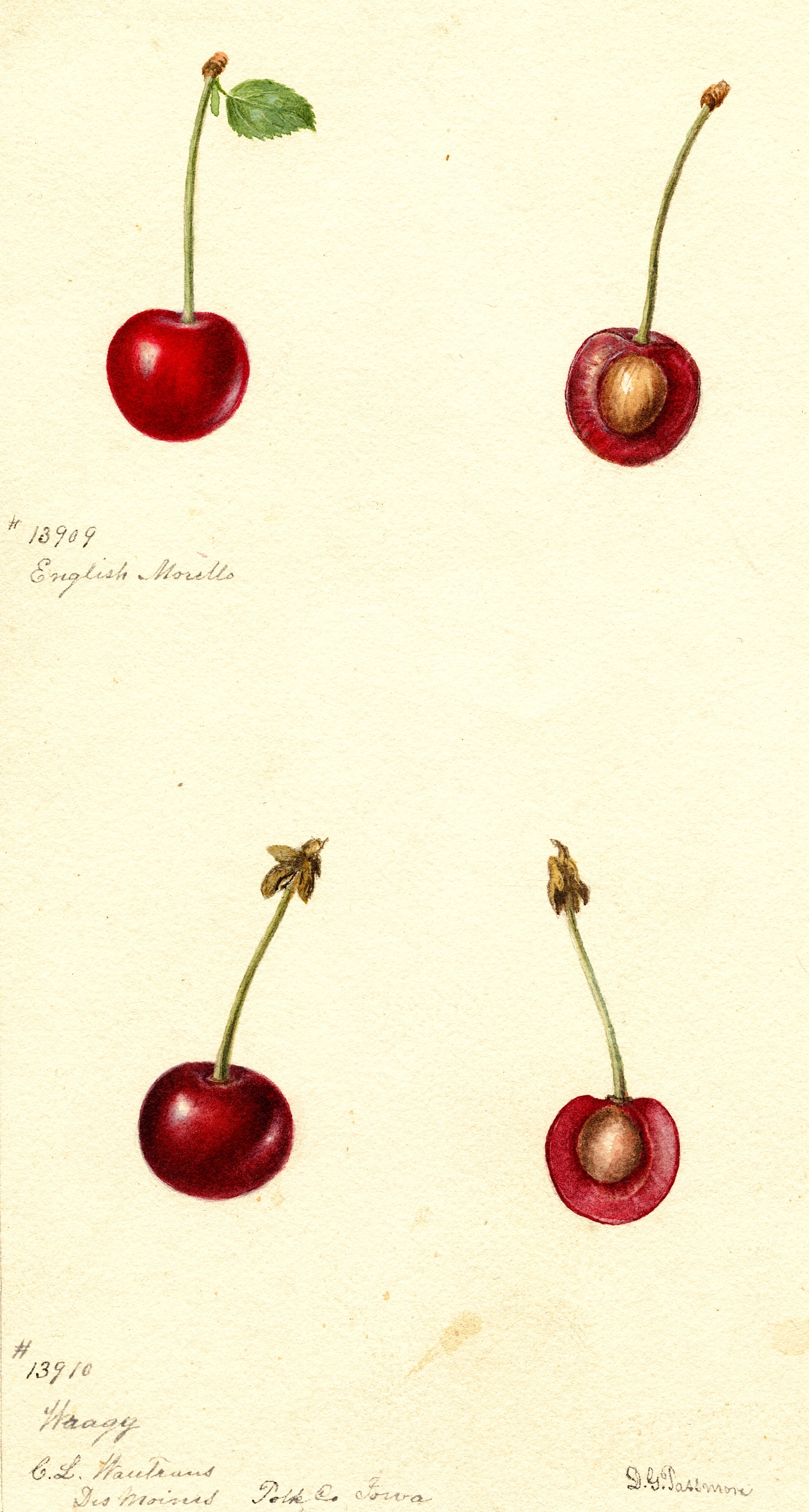 ENGLISH MORELLO
ENGLISH MORELLO
One of the great debates of pomological historians of the 19th century was generated by the question, whence did the English Morello derive? Everyone knew it wasn’t England even though it had been recorded in English orchards as early as the first half of the 17th century. Holland and Germany both had plausible claims as its home. Yet on American soil the cherry became universally known as ‘The English Morello.” But British fruit growers made it the dominant late season sour cherry in commercial orchards early in the middle of the 19th century. Very hardy and very productive, this dark red cherry came to define the tart pie cherry, a fruit too acidic to eat fresh; but cooked, it was singularly rich and forward in flavor. The fruit ranged from 3/4s to an inch in diameter. Above medium, but not huge. A slow growing tree, when mature it enjoyed singular health and productivity. Thus it required minimal maintenance. By the last half of the 19th century it enjoyed universal support among growers and became a major market cherry. It remains a greatly important variety, widely available from commercial nurseries.
Ulysses Hedrick in his classic Cherries of New York observed of the English Morello, "It is not a table fruit and can hardly be eaten out of hand until it loses some of its astringency and acidity by thorough ripening. In any way the cherries are prepared by cooking, however, it is one of the best, culinary processes giving the fruits a rich, dark wine color, very attractive in appearance, and most pleasant, sprightly, aromatic flavor" (p. 139).
Most southern nurseries that offered cherries carried the English Morello, since it was the standard late season sour cherry in the commercial market, much as the Monmorency was the chief mid-season standard bearer.
Image: U.S. Department of Agriculture Pomological Watercolor Collection. Rare and Special Collections, National Agricultural Library, Beltsville, MD 20705, Deborah Passmore, 1897.
David S. Shields